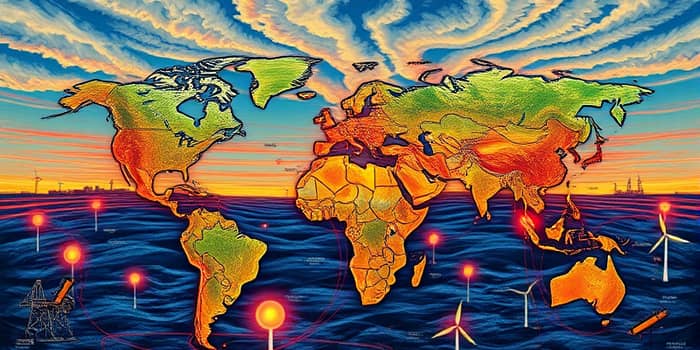
Since 2021, global markets have faced unprecedented post-pandemic economic recovery, weather disruptions, and maintenance delays that have driven energy prices on a roller-coaster ride. Investors, policymakers, and consumers have witnessed dramatic swings, reminding us that beneath the promise of supply expansions, vulnerabilities to oil and gas shocks persist. As we look ahead to 2025, understanding the interplay of geopolitical tensions and structural shifts in the energy landscape is more critical than ever.
Energy prices surged as economies reopened, but the path has been uneven. The onset of the Russia-Ukraine conflict in February 2022 sent ripples through markets, pushing natural gas to record natural gas prices levels and driving oil costs to the highest oil prices since 2008. Capacity expansions have provided some buffer, yet demand growth, high wholesale costs, and declining inventories continue to shape price curves.
Key drivers of volatility include:
According to the IEA, even with capacity expansions in fossil fuels and renewables, prices are set to climb in 2025. Rising production costs, declining gas inventories, and surging global demand—especially in emerging markets—will keep markets on edge.
Geopolitical flashpoints have direct, measurable impacts on energy costs. In the Middle East, sporadic conflict has kept traders on alert, even when actual supply remains intact. A tightening of sanctions on Iran, for example, could remove over one million barrels per day from global markets, sending Brent crude into the mid-$80s or higher.
Meanwhile, Europe’s dependence on Russian gas has been dramatically reduced through costly LNG imports, driving up prices for Asian buyers and straining household budgets. If OPEC+ fails to offset lost barrels quickly, a severe disruption could push world oil prices close to $90 per barrel.
These episodes remind us that geopolitical risk is not a future possibility—it is a constant variable in price equations.
Beyond short-term shocks, structural changes are reshaping energy security strategies. Governments and corporations are increasingly prioritizing energy security and affordability over pure decarbonization goals, balancing climate commitments with economic stability.
Key trends include:
To illustrate these dynamics, consider the following snapshot of market indicators:
This table underscores that while supply growth rebounds, price levels remain elevated and sensitive to disruptions.
Forward risk indicators such as BlackRock’s Geopolitical Risk Dashboard highlight the persistent sensitivity of oil prices to global hotspots—from the Middle East to Russia-NATO tensions. Additionally, populist political swings in Europe and potential U.S. trade protectionism could introduce new layers of uncertainty.
Market watchers should monitor:
Such indicators offer early warnings of price shocks that can cascade through industries and economies.
For companies and policymakers, the message is clear: integrate geopolitical and operational risks into strategic planning. Energy-intensive industries must diversify supply sources, engage in long-term contracts with flexible terms, and consider hedging strategies to mitigate price spikes.
Practical steps include:
These actions can build resilience against sudden cost surges and supply disruptions.
Ultimately, the energy market’s “status quo” is under threat. Structural shifts, cyclical forces, and political upheavals are converging to redefine the landscape for years to come. By staying vigilant and adopting proactive strategies, stakeholders can navigate this era of volatility and emerge stronger.
References













